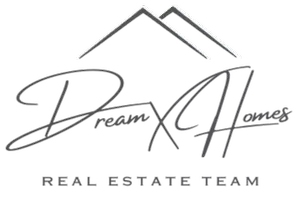Tired of Feeling Lost in the Home Loan Maze?
Get 5 Insider Secrets from NAR(National Association of Realtors) that Make Navigating Your Loan Simple and Stress-Free!
I consent to receive calls and texts from DreamX Homes & Glasshouse Realty Group for real estate information and assistance. You can unsubscribe anytime.
How to Calculate Mortgage Costs in Ohio in 5 Easy Steps
How to Calculate Mortgage Costs in Ohio in 5 Easy Steps

Ohio Mortgage Calculator: Simplifying Home Financing in the Buckeye State
Whether you’re buying your first home or simply exploring your options, understanding how to calculate mortgage costs in Ohio can ease the home buying journey. If you're searching for mortgage calculator ohio, your quest for clarity ends here. Here’s a quick glimpse:
- Start by assessing your budget using the 20% down payment rule.
- Calculate monthly mortgage payments, including taxes and insurance.
- Explore various loan options like FHA or VA loans.
- Don’t forget to include additional costs such as property taxes and PMI.
- Have a plan for interest rates and loan terms.
Ohio's housing market is thriving. Known for its healthy homeownership trends, residents here spend less than 19% of their monthly income on housing. This affordability makes Ohio an attractive place for tech-savvy young professionals like you, seeking vibrant city life without financial strain. With stable market conditions and competitive mortgage rates ranging between 5.86% and 5.96%, owning a home in Ohio is both feasible and rewarding.
Ohio offers diverse cities, from busy Columbus to scenic Cleveland. Each city provides unique opportunities and potential for future investment. Homeownership in this state aligns with your values of transparency and investment potential, ensuring a seamless and informed buying experience.

Understanding Mortgage Basics
When you're diving into home buying in Ohio, understanding mortgage basics is crucial. Let's break it down.
Mortgage Rates
Mortgage rates are the percentage of interest you'll pay on your home loan. In Ohio, rates are competitive, generally ranging between 5.86% and 5.96%. These rates can vary based on factors like your credit score and the type of loan you choose. Keep an eye on these rates, as they can significantly impact your monthly payments and the total cost of your mortgage over time.
Loan Types
There are several types of mortgage loans available to Ohio homebuyers:
- Fixed-Rate Loans: These loans have a constant interest rate throughout the loan term. They're great for stability, as your monthly payments won't change.
- Adjustable-Rate Mortgages (ARMs): These start with a lower interest rate that can adjust over time. They might be beneficial if you plan to sell or refinance before the rate changes.
- FHA Loans: Backed by the Federal Housing Administration, these loans are ideal for first-time buyers with lower down payment options.
- VA Loans: Available to veterans and active military members, these loans often come with no down payment and favorable terms.
- USDA Loans: Designed for rural property buyers, these loans can also offer no down payment options.
Down Payment
Your down payment is the initial amount you pay when purchasing a home. The typical rule of thumb is 20% of the home's price. However, some loans, like FHA, allow for as little as a 3% down payment. The more you pay upfront, the less you'll need to borrow, which can lower your monthly payments and potentially get you better interest rates.

In Ohio, understanding these basic concepts helps you make informed decisions. Whether opting for a fixed-rate loan for peace of mind or an FHA loan for lower upfront costs, knowing your options is key. As you continue your home buying journey, these basics will guide your choices and help you steer the process with confidence.
Step 1: Determine Your Budget
Before you start house hunting in Ohio, it's crucial to determine your budget. Knowing what you can afford will save you time and help you focus on homes within your price range.
Income Requirements
Start by evaluating your annual income. This includes your base salary, bonuses, commissions, and any other sources of income. Lenders look at your total income to determine how much you can borrow. The more comprehensive your income picture, the better you can plan your mortgage.
Debt-to-Income Ratio (DTI)
The debt-to-income ratio is a key factor lenders use to assess your ability to manage monthly payments. It's calculated by dividing your total monthly debt payments by your gross monthly income and multiplying by 100 to get a percentage.
Here's the formula:
[ \text{DTI} = \left( \frac{\text{Total Monthly Debt Payments}}{\text{Gross Monthly Income}} \right) \times 100 ]
A good rule of thumb is to keep your DTI below 36%. This means your total debt payments, including your mortgage, shouldn't exceed 36% of your income. Keeping your DTI low increases your chances of securing a mortgage with favorable terms.
Affordability Calculator
Use an affordability calculator to get a clearer picture of what you can afford. This tool considers your income, debts, and down payment to estimate your maximum home price. It’s a great way to set realistic expectations and avoid overextending yourself financially.
For example, if you have a $70,000 salary, the calculator will help you determine the size of the mortgage you can afford based on your DTI and other financial factors.
By understanding your income, DTI, and utilizing an affordability calculator, you’ll be well-prepared to set a budget that aligns with your financial situation. This is the first step in making your Ohio homeownership dream a reality.
Step 2: Use a Mortgage Calculator Ohio
Once you've set your budget, the next step is to use a mortgage calculator Ohio to get a clearer picture of your potential monthly payments. This tool is essential for understanding how different factors will impact your mortgage costs.
Monthly Payments
A mortgage calculator helps you estimate your monthly payments by considering the loan amount, interest rate, and loan term. For instance, if you're looking at a $350,000 mortgage, the calculator will show you how much you'll pay each month towards the principal and interest.
Tip: Adjusting the loan term (e.g., from 30 years to 15 years) can significantly change your monthly payment and the total interest paid over the life of the loan.
Taxes and Insurance
In Ohio, property taxes and insurance are important components of your overall housing costs. The mortgage calculator Ohio can include estimates for these expenses, giving you a more comprehensive view of your monthly financial commitment.
- Property Taxes: Ohio's property tax rates are above the national average, with an effective rate of 1.41%. These taxes fund essential services like schools and police departments.
- Homeowners Insurance: On average, Ohio homeowners pay $2,107 annually for insurance. This covers potential risks like fire or theft, though you might need additional flood insurance depending on your location.
By using a mortgage calculator, you can adjust variables such as the down payment amount and loan term to see how they affect your monthly payments. This tool is invaluable for planning and ensuring you stay within your budget while accounting for all necessary costs.
Step 3: Explore Loan Options
When buying a home in Ohio, it's crucial to understand the various loan options available. Each loan type has its own benefits and requirements, so exploring your options can help you find the best fit for your needs. Let's explore three popular choices: FHA loans, VA loans, and USDA loans.
FHA Loans
Federal Housing Administration (FHA) loans are a great option for first-time homebuyers or those with less-than-perfect credit. These loans are backed by the government, which allows lenders to offer more favorable terms.
- Lower Down Payments: FHA loans often require as little as 3.5% down, making them accessible if you haven't saved a large down payment.
- Flexible Credit Requirements: If your credit score isn't stellar, an FHA loan might still be within reach. This flexibility makes homeownership possible for many who might not qualify for conventional loans.
However, keep in mind that FHA loans require mortgage insurance premiums (MIP), which can increase your monthly costs.
VA Loans
If you're a veteran, active-duty service member, or eligible family member, a VA loan could be your best bet. These loans are backed by the Department of Veterans Affairs and offer several perks.
- No Down Payment Required: One of the biggest advantages of a VA loan is the ability to buy a home with no down payment, making it easier to get into a home sooner.
- No PMI: Unlike FHA loans, VA loans don't require private mortgage insurance, which can save you a significant amount of money each month.
VA loans also come with competitive interest rates and less stringent credit requirements, making them a top choice for those who qualify.
USDA Loans
For those looking to buy in rural or suburban areas, USDA loans could be a perfect fit. These loans are backed by the United States Department of Agriculture and offer benefits similar to VA loans.
- Zero Down Payment: Like VA loans, USDA loans don't require a down payment, making homeownership more accessible.
- Affordable Rates: USDA loans often come with lower interest rates, which can save you money over the life of the loan.
To qualify, you'll need to meet certain income requirements and ensure the property is in an eligible rural area.
By understanding these loan options, you can make an informed decision about which one aligns best with your financial situation and homeownership goals.
Next, we'll look at additional costs to consider beyond your mortgage payment.
Step 4: Consider Additional Costs
When planning your home purchase in Ohio, factor in costs beyond the monthly mortgage payment. These additional expenses can impact your budget and overall affordability. Let's break down three key costs: property taxes, PMI (Private Mortgage Insurance), and HOA fees.
Property Taxes
Ohio has higher property tax rates compared to the national average, with an effective rate of 1.41%. This means that for every $100,000 of home value, you can expect to pay approximately $1,410 annually in property taxes.
- County Variations: Property tax rates can vary significantly between counties. It's important to research the specific rate in the area where you're buying.
- Budgeting Tip: Incorporate property taxes into your monthly budget to avoid surprises. Many lenders include this in escrow, spreading the cost over the year.
Private Mortgage Insurance (PMI)
PMI is typically required if your down payment is less than 20% of the home's purchase price. This insurance protects the lender in case you default on the loan.
- Cost Factor: PMI can add anywhere from 0.3% to 1.5% of the original loan amount annually to your mortgage payment.
- Avoiding PMI: Consider making a larger down payment or opting for a VA loan if eligible, as VA loans do not require PMI.
HOA Fees
If you're purchasing a property within a homeowners association, you'll likely have to pay HOA fees. These fees cover maintenance and improvements of common areas and amenities.
- Monthly Budget Impact: HOA fees can range from $200 to $400 or more per month, depending on the community and amenities offered.
- Assessing Value: Evaluate whether the services and amenities provided by the HOA justify the cost. Some buyers find the added amenities worth the expense, while others prefer properties without these fees.
By considering these additional costs, you can create a more accurate picture of your monthly homeownership expenses. This knowledge helps you avoid financial strain and ensures you choose a home that fits comfortably within your budget.
Next, we'll move on to finalizing your mortgage plan, including choosing the right interest rates, loan term, and down payment strategies.
Step 5: Finalize Your Mortgage Plan
Finalizing your mortgage plan involves making key decisions about interest rates, loan term, and down payment strategies. Each of these factors can significantly impact your overall mortgage cost and monthly payments. Let's break them down:
Interest Rates
Interest rates determine how much you'll pay to borrow money for your home. A lower rate means lower monthly payments and less interest over the life of the loan.
- Fixed vs. Adjustable Rates: Fixed-rate mortgages offer stability with the same rate throughout the loan term. Adjustable-rate mortgages (ARMs) start with a lower rate that can change over time. Choose based on your financial situation and how long you plan to stay in the home.
- Rate Shopping: It's crucial to shop around and compare rates from different lenders. Even a small difference can save you thousands over the life of the loan.
Loan Term
The loan term is the number of years you have to repay the mortgage. Common terms are 30 and 15 years.
- 30-Year Term: Offers lower monthly payments but results in more interest paid over time.
- 15-Year Term: Higher monthly payments but saves money on interest and builds equity faster.
- Choosing the Right Term: Consider your long-term financial goals and current budget. A mortgage calculator ohio can help you see how different terms affect your payments.
Down Payment Strategies
Your down payment reduces the loan amount and can affect your mortgage terms.
- Standard Down Payment: Aim for at least 20% to avoid PMI and secure better interest rates.
- Low Down Payment Options: Programs like FHA loans require as little as 3.5% down but may include PMI.
- Savings Plan: Start saving early and consider using bonuses, tax refunds, or gifts to boost your down payment.
By carefully considering these elements, you can tailor a mortgage plan that aligns with your financial situation and homeownership goals.
Next, let's address some frequently asked questions about Ohio mortgages.
Frequently Asked Questions about Ohio Mortgages
How much of a mortgage can I afford with a $70,000 salary?
Affordability hinges on several factors, but a good rule of thumb is the 28/36 rule. This suggests that your mortgage payment should not exceed 28% of your gross monthly income, and your total debt payments should stay under 36%.
For a $70,000 annual salary, your gross monthly income is about $5,833. Using the 28% rule, aim for a monthly mortgage payment of approximately $1,633. However, remember to factor in other debts and living expenses to ensure you're comfortable with the payment.
What income is needed for a $350,000 mortgage?
To determine the income needed for a $350,000 mortgage, consider the same 28/36 rule. Assume a 30-year fixed mortgage with a 6.88% interest rate (as per recent averages). Your monthly payment would be roughly $2,300 (excluding taxes and insurance).
Based on the 28% rule, you would need a gross monthly income of about $8,214, translating to an annual income of approximately $98,568. That this is a rough estimate, and individual circumstances like down payment size, interest rates, and other debts can alter this figure.
How do down payments affect mortgage costs?
Down payments play a crucial role in shaping your mortgage costs. Here’s how:
- Lower Loan Amount: A larger down payment reduces the principal amount you need to borrow, which decreases your monthly payments and the total interest paid over the life of the loan.
- Avoiding PMI: Typically, a 20% down payment allows you to avoid Private Mortgage Insurance (PMI), which can add a significant monthly cost.
- Better Interest Rates: Larger down payments often qualify for better interest rates, as they lower the lender's risk.

A mortgage calculator ohio can help you visualize how different down payment amounts affect your monthly payments and overall costs. Adjusting the down payment in the calculator can demonstrate potential savings and help you decide on a strategy that fits your financial situation.
Conclusion
At DreamX.Homes, we’re dedicated to making your home-buying journey as smooth and transparent as possible. Our personalized guides are designed to help you steer the complex world of mortgages with ease, ensuring you have all the information you need to make informed decisions.
Whether you're a first-time homebuyer or a seasoned investor, we offer custom solutions that fit your unique needs. Our commitment to transparent transactions means you’ll always understand your options and feel confident in your choices. We believe in clear communication and providing you with the tools you need, like our mortgage calculator ohio, to plan effectively for your future.
Let us be your trusted partner in securing your dream home in Ohio. Explore more about how we can assist you on our mortgage calculator page.
Categories
- All Blogs 92
- Boosting Home Value 3
- Buyer Resources 13
- Eco-Friendly Upgrades 1
- First-Time Buyer Tips 2
- Home Buying & Selling 3
- Home Improvement & Staging 5
- Investment & Financing 14
- Local Attractions & Schools 5
- Local Market Trends 8
- Local Policy Changes 2
- Market & Industry News 2
- Market Insights 6
- Mistakes to Avoid 1
- Mortgage & Financing 22
- Neighborhood Spotlights 12
- Neighborhoods & Lifestyle 18
- New Construction 10
- Real Estate News & Updates 4
- Real Estate Technology 2
- Seller Resources 4
- Staging Tips 2
- Sustainability 3
Recent Posts










Tired of Feeling Lost in the Home Loan Maze?
Get 5 Insider Secrets from NAR(National Association of Realtors) that Make Navigating Your Loan Simple and Stress-Free!
I consent to receive calls and texts from DreamX Homes & Glasshouse Realty Group for real estate information and assistance. You can unsubscribe anytime.

"My job is to find and attract mastery-based agents to the office, protect the culture, and make sure everyone is happy! "

